Everest Base Camp Trek 12 Days From Kathmandu
As the first rays of dawn gently kissed the snow-capped peaks of the Himalayas, a group of trekkers set foot on the trail to Everest Base Camp, embarking on a transformative journey.
With each step, they ventured closer to the towering giants that have captured the imagination of adventurers for centuries.
The crisp mountain air filled their lungs, fueling their determination to conquer one of the world’s most challenging terrains.
But what lay ahead was not just a physical test; it was a spiritual odyssey that would push their boundaries and redefine their perceptions of strength and resilience.
Key Points
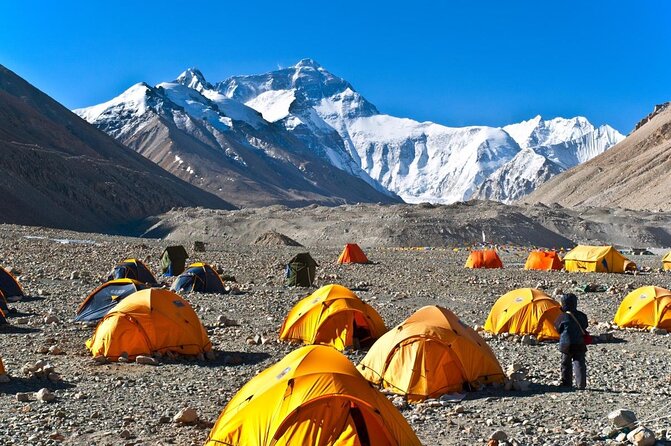
- Altitude acclimatization is crucial for a safe trek to Everest Base Camp.
- Optimal trekking seasons and essential preparation ensure a successful expedition.
- Diverse wildlife encounters and immersive trekking experiences await along the route.
- Proper gear, fitness, safety measures, and cultural sensitivity enhance the overall journey.
Trek Overview
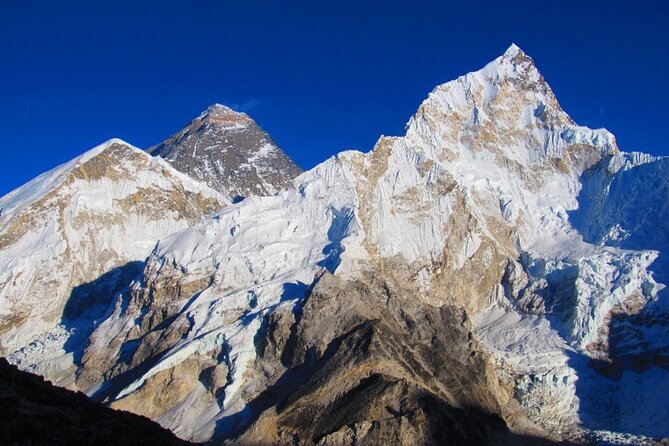
Set out on an exhilarating journey through the rugged Himalayan terrain with the Everest Base Camp Trek from Kathmandu. Altitude acclimatization is crucial during this trek to prevent altitude sickness. Trekkers will gradually ascend, allowing their bodies to adjust to the diminishing oxygen levels.
Interacting with the local communities along the way adds a cultural dimension to the adventure. These interactions offer a unique opportunity to learn about the Sherpa way of life, their traditions, and customs. By engaging with the locals, trekkers can gain insight into the challenges and joys of living in such a remote and harsh environment.
This blend of altitude acclimatization and local community interactions enriches the overall experience of the Everest Base Camp Trek.
Itinerary Details
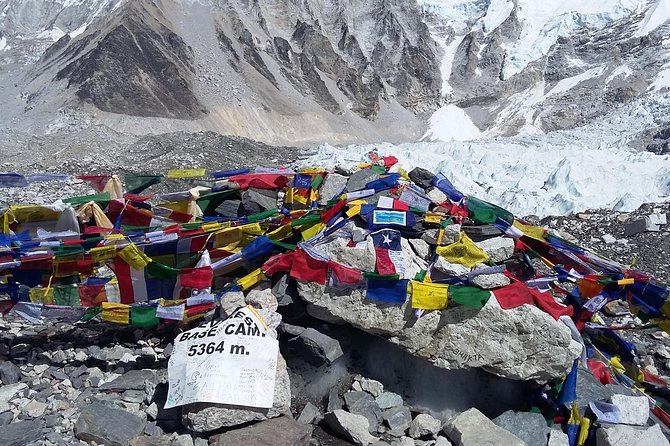
Navigating through the detailed itinerary, trekkers will uncover the meticulously planned route and key highlights of the Everest Base Camp Trek from Kathmandu. The trek spans 12 days and covers approximately 130 kilometers round trip. Trekkers will experience various route variations, including stops at Namche Bazaar, Tengboche Monastery, and Gorakshep. An acclimatization schedule is strategically built in to help adventurers adjust to the high altitudes, with rest days in Namche Bazaar and Dingboche. The journey also includes a visit to Kala Patthar, offering stunning views of Mount Everest. Below is a breakdown of the itinerary:
| Day | Location |
|---|---|
| Day 1-3 | Kathmandu |
| Day 4-6 | Namche Bazaar |
| Day 7-9 | Dingboche |
| Day 10-12 | Everest Base Camp |
This structured plan ensures trekkers have a well-paced and memorable experience on their way to Everest Base Camp.
Best Time to Trek
Choosing the optimal time for your Everest Base Camp trek can significantly impact your overall experience and comfort level. To make the most of your journey, consider the following:
-
Weather patterns: The best time to trek to Everest Base Camp is during the pre-monsoon (February to May) and post-monsoon (late September to December) seasons when the weather is relatively stable, offering clear skies and stunning views of the Himalayas.
-
Gear recommendations: Pack appropriate layers including a warm down jacket, thermal clothing, sturdy hiking boots, and a good quality sleeping bag to stay comfortable and safe in the varying temperatures and rugged terrain of the Everest region.
-
Acclimatization: Allow ample time for acclimatization at higher altitudes to prevent altitude sickness and ensure a successful trekking experience.
Essential Packing List
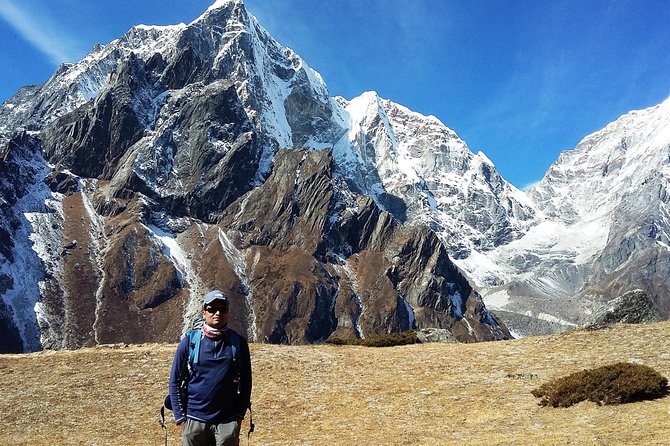
When preparing for the Everest Base Camp trek, ensuring you have the essential items on your packing list is crucial for a safe and enjoyable journey through the Himalayas. Here are some packing tips and gear selection suggestions to help you prepare adequately:
| Packing List | Gear Selection | Tips |
|---|---|---|
| Thermal clothing | Sturdy hiking boots | Layering is key |
| First aid kit | Quality backpack | Include altitude sickness meds |
| Water bottle | Headlamp | Stay hydrated and safe |
| Snacks | Trekking poles | Energy on the go |
| Camera | Sunglasses | Capture memories, protect eyes |
These items will be your companions on this challenging trek, so choose wisely and pack light for a successful adventure.
Altitude Sickness Prevention
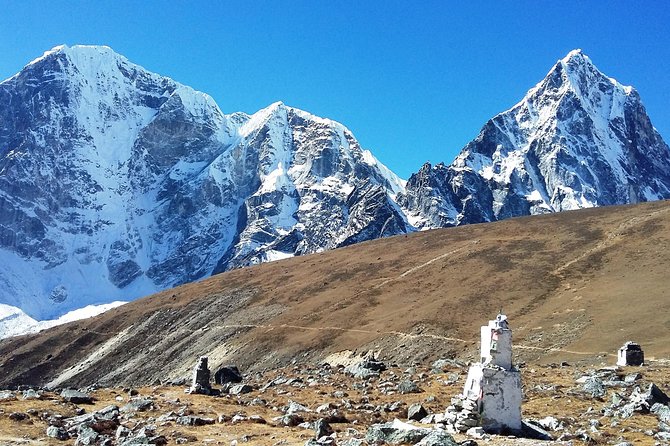
As trekkers ascend higher into the Himalayas on the Everest Base Camp journey, safeguarding against altitude sickness becomes a paramount concern for ensuring a safe and enjoyable expedition. To prevent altitude sickness and acclimatize effectively, trekkers can follow these essential tips:
-
Stay Hydrated: Drinking plenty of water helps combat dehydration, a common trigger for altitude sickness.
-
Ascend Slowly: Gradual ascent allows the body to adjust to the decreasing oxygen levels, reducing the risk of altitude sickness.
-
Listen to Your Body: Pay attention to any symptoms of altitude sickness such as headache, nausea, or fatigue. Inform your guide immediately if you experience any discomfort to prevent further complications.
Accommodation Options
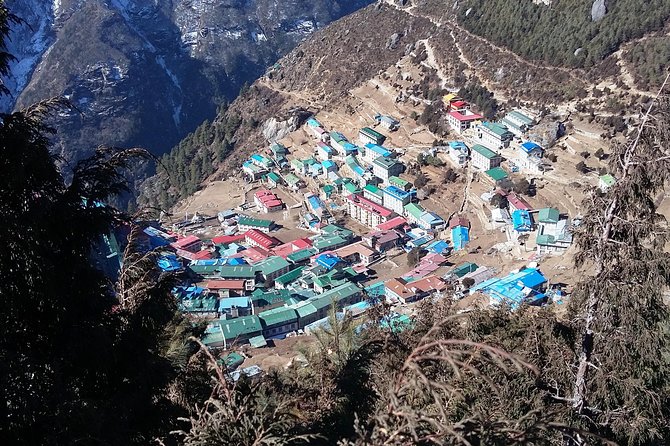
For trekkers embarking on the Everest Base Camp journey, a variety of accommodation options ranging from cozy guest houses to comfortable lodges await along the trekking route. Those seeking a more luxurious experience can opt for upscale lodges that offer amenities like attached bathrooms, hot showers, and even Wi-Fi in some places.
On the other hand, trekkers looking for a more adventurous experience can choose to camp at designated campgrounds along the trail. Camping allows for a closer connection to nature and a unique experience under the stars.
Whether indulging in the comforts of luxury lodges or opting for a more rugged camping experience, trekkers are sure to find suitable accommodation options to rest and rejuvenate during their Everest Base Camp adventure.
Local Cuisine Highlights
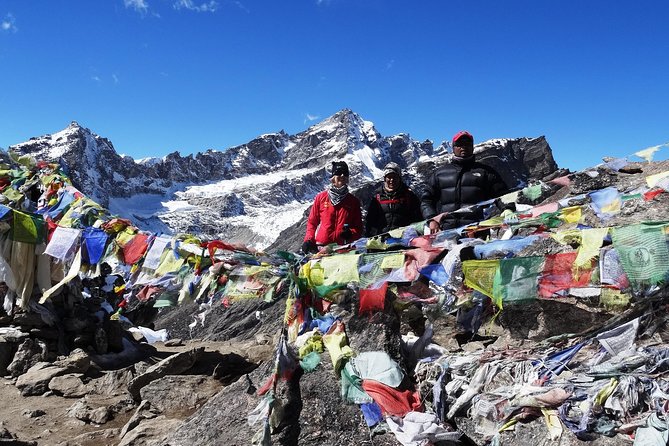
While resting in cozy guest houses or comfortable lodges along the Everest Base Camp trek, trekkers can savor the diverse and flavorful local cuisine highlights that add a delightful touch to their adventurous journey.
Here are some culinary delights to look forward to:
- Sherpa Stew: A hearty and warming dish, perfect for refueling after a day of trekking.
- Momos: These delicious dumplings filled with vegetables or meat are a must-try for a taste of traditional Nepali flavors.
- Yak Steak: Experience the unique taste of yak meat, lean and flavorful, cooked to perfection in various styles.
These food experiences not only satisfy hunger but also provide insight into the rich culinary heritage of the region.
Cultural Insights
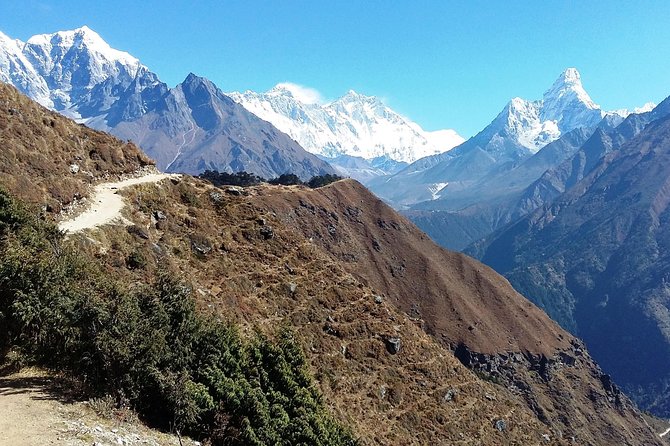
Enjoy the vibrant tapestry of traditions and customs that define the cultural fabric of the Everest region as you trek towards the base camp. Cultural immersion along the journey provides a unique opportunity to witness and appreciate Sherpa traditions firsthand. The Sherpa people, known for their mountaineering skills and warm hospitality, have a rich heritage deeply rooted in Tibetan Buddhism. As you interact with local communities, you may observe traditional ceremonies, intricate handicrafts, and colorful prayer flags adorning the landscape. Engage in the local way of life by savoring yak butter tea and hearty Sherpa stew, gaining a deeper understanding of the cultural significance behind these practices.
| Cultural Immersion | Sherpa Traditions | Highlights |
|---|---|---|
| Local ceremonies | Tibetan Buddhism | Colorful prayer flags |
| Handicrafts | Warm hospitality | Traditional yak butter tea |
| Traditional cuisine | Mountaineering skills | Rich cultural heritage |
Wildlife Encounters
As trekkers venture through the Everest region towards the base camp, they may encounter a variety of fascinating wildlife species, adding an element of natural wonder to their journey.
Bird watching enthusiasts will be delighted by the sight of Himalayan Monal, Blood Pheasants, and Snow Partridges gracefully moving through the rocky terrain.
Animal sightings might include the elusive Snow Leopard, Musk Deer, and Himalayan Tahr, offering a glimpse of these rare and majestic creatures in their natural habitat.
The rustling of the trees and the distant calls of the wildlife create an immersive experience, reminding trekkers of the raw beauty and untamed wilderness that surrounds them on their adventure to Everest Base Camp.
Trekking Challenges
Navigating the rugged terrain and high altitudes of the Everest region presents trekkers with a series of exhilarating challenges that test both physical endurance and mental resilience.
Proper gear selection is crucial for success, including items like sturdy hiking boots, warm clothing layers, a reliable backpack, and high-quality sunglasses.
Fitness preparation is key, as the trek involves long days of walking at high elevations. To tackle these challenges, trekkers should engage in cardiovascular exercises, strength training, and altitude acclimatization before embarking on the journey.
Being physically and mentally prepared will enhance the overall experience and increase the chances of successfully reaching Everest Base Camp.
Safety and Security Tips
Preparing for a safe and secure trek in the Everest region involves adhering to specific guidelines and precautions to ensure a successful journey to Everest Base Camp. Here are some essential safety and security tips to keep in mind:
-
Emergency Procedures: Familiarize yourself with emergency protocols and contact information for rescue services in the region. It’s crucial to know what to do in case of altitude sickness, injuries, or other emergencies.
-
Travel Insurance: Obtain comprehensive travel insurance that covers trekking activities at high altitudes. This insurance should include coverage for medical emergencies, evacuation by helicopter if needed, and trip cancellations or interruptions due to unforeseen circumstances.
-
Stay Informed: Keep updated on weather conditions, trail changes, and any potential risks along the trekking route. Being informed can help you make safer decisions during the journey.
Trekking Etiquette
Proper etiquette while trekking in the Everest region is essential for fostering a respectful and harmonious experience among fellow hikers and the local community. Being mindful of environmental impact and maintaining positive group dynamics are key components of trekking etiquette.
| Trekking Etiquette | Description | Importance |
|---|---|---|
| Environmental Impact | Pack out all trash, including biodegradable items. Respect wildlife and vegetation. Stay on designated trails to preserve the fragile ecosystem. | Preserve nature |
| Group Dynamics | Communicate openly and kindly with fellow trekkers. Be considerate of differing abilities and pace. Support and encourage each other throughout the trek. | Foster camaraderie |
| Cultural Sensitivity | Respect local customs and traditions. Ask for permission before taking photos of locals. Learn basic greetings in Nepali for interaction with villagers. | Honor local culture |
| Trail Courtesy | Yield to uphill trekkers. Step aside for pack animals. Keep noise levels to a minimum, especially near monasteries and sacred sites. | Ensure safety and respect |
| Waste Management | Use designated toilets. Dispose of waste properly. Consider carrying a small trash bag to collect litter along the trail. | Maintain cleanliness |
Common questions
Can I Customize the Itinerary to Include Additional Days or Side Trips During the Everest Base Camp Trek?
When customizing the itinerary, travelers can add extra days for side excursions or explore alternate routes during the trek. The flexibility allows for a tailored adventure experience, accommodating varied preferences and interests in the journey.
Are There Any Age Restrictions or Fitness Requirements for Participating in the Trek?
Age restrictions and fitness requirements vary depending on the trek’s difficulty level. It’s crucial to assess one’s physical condition and consult healthcare professionals before embarking on any trek, ensuring safety and enjoyment throughout the journey.
Is There Wi-Fi or Cellphone Service Available Along the Trekking Route?
Wi-fi availability and cellphone reception can vary along trekking routes. In some areas, limited connectivity is possible through local lodges for a fee. It’s advisable to inform loved ones of potential communication challenges beforehand.
Are There Any Opportunities for Cultural Experiences or Interactions With Local Communities During the Trek?
While trekking, trekkers can enjoy the rich local culture by interacting with Sherpa communities, visiting monasteries, and participating in traditional ceremonies. These experiences offer a deeper understanding of the region’s heritage.
What Is the Policy Regarding Tipping the Guide and Porters During the Trek?
When trekking, it’s customary to tip guides and porters as a sign of appreciation for their hard work. Following cultural etiquette, tipping reflects gratitude for their services. It’s a thoughtful gesture that fosters positive relationships.
Last Words
Embark on the Everest Base Camp Trek 12 Days From Kathmandu for an unforgettable adventure filled with breathtaking landscapes, cozy accommodations, and traditional meals.
With experienced guides by your side, conquer rugged terrains and challenge your limits in the shadow of Mount Everest.
From wildlife encounters to altitude sickness prevention, this expedition offers a seamless and rewarding exploration of one of the world’s most iconic trekking destinations.
Elevate your spirit and create memories that will last a lifetime.